—even though technology was/is already part of the humanities, already both an outcome of human cultural practices and a vehicle through which human cultural practice occurs. Technology, in fact, is a primary enabler of social and cultural interaction; technology offers tool systems for expressing cultural practice.
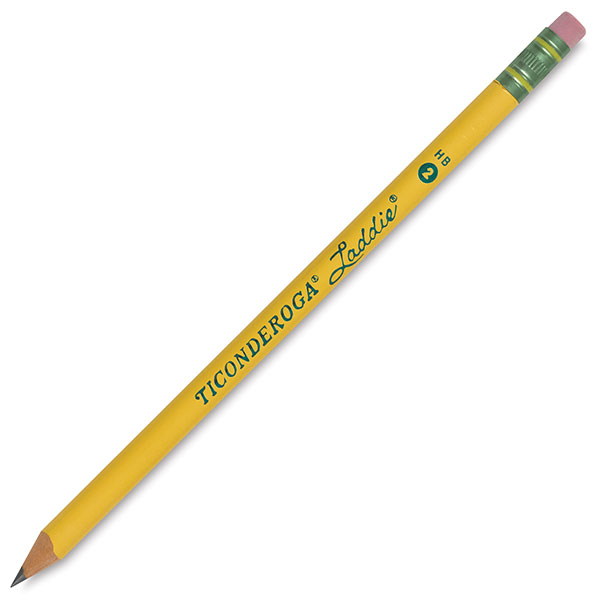 Since I first wrote a story when I was six, I used technology, the technology of loose leaf paper manufactured with the blue lines that I thought of as over-disciplined veins, the kind possible in households more common than my own where I was surprised sometimes that my own veins weren't curlicues; I used the technology of a #2 graphite-cored pencil (a Laddie pencil),
Since I first wrote a story when I was six, I used technology, the technology of loose leaf paper manufactured with the blue lines that I thought of as over-disciplined veins, the kind possible in households more common than my own where I was surprised sometimes that my own veins weren't curlicues; I used the technology of a #2 graphite-cored pencil (a Laddie pencil),  and, as another example:
and, as another example: the technology of my mind within the parameters of its flexible configuration to which both genetic and environmental (which includes social and cultural elements) factors contribute. I used a manual typewriter by fifth grade, first a Royal, much like the one pictured here (courtesy strikethru.net), and then an electric Smith Corona.
Some of the nature of mergers I continue to explore involve ways of reconfiguring information in order to extend its accessibility and in order to expose more possible configurations of systems of being and systems of meaning, simultaneously extending possible access to those systems, assuming some existing or some acquired means to connect to or otherwise retrieve web-based information, which at the moment is the best location to share that which is an outcome of collaboration that is necessarily an outcome of (form of) interaction.
Perhaps this is also a cautionary approach to try not to prematurely assume accuracy of opinion, or correctness of conclusion; a cautionary approach not to prematurely assume that a configuration of information has revealed permanent knowledge, or anything more than a temporary fact that is only a consequence of everything collaborating (interacting) in order to produce the outcome configuration of that moment of interaction.
Perhaps this approach is indicative of a kind of intellectual gluttony and a desire for kaleidoscopic seduction in my wanting to configure from as many angles as I can imagine on as many scales as I can imagine
The myriad beautiful assemblages of various forms of dimensionality (perhaps becoming increasingly unsteady temporarily and/or [on various scales] becoming increasingly steady temporarily as they are assembled/reassembled); the myriad beautiful assemblages are (usually) temporary structures that are outcomes of arranging and shuffling clusters of geometries into super-clusters,
 perhaps arriving at configurable forms of umbrellas that can temporarily function as large-scale or microscopically revealed universes, as in, for example, this image, called: "Cellular cosmos: A microscopic universe" from chronoscapes and aquascapes of bubble films, that, as thin as they may seem, have multiple surfaces; each bubble film has multiple surfaces.
perhaps arriving at configurable forms of umbrellas that can temporarily function as large-scale or microscopically revealed universes, as in, for example, this image, called: "Cellular cosmos: A microscopic universe" from chronoscapes and aquascapes of bubble films, that, as thin as they may seem, have multiple surfaces; each bubble film has multiple surfaces. It is possible to mix these interacting layers so that the surfaces are disturbed. A rumpling of this sandwich of surfaces can occur; a temporary mingling can happen, say, as these surfaces are stirred into each other for a more complex relationship of interaction, the pattern of oil obviously dynamic, obviously shifting during the aesthetic and intimate trauma of the stir. With a stick (a single-tined fork) I stirred, but did not film, a temporary little vortex into what may have behaved as a center of the oil (I treated it as such).
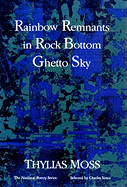 And although the sandwich also reminded me of my fourth book in which I wrote that oil in the puddle was still ghetto stained glass, still rainbow remnants in rock bottom ghetto sky, I wondered what the oil, in small enough quantity to be pretty without also being disastrous, looked like from underneath, looking up at it from in the water, as fish might, as aquatic mammals while submerged might, as sea turtles might; I wondered about the tips of aquatic plants dipping into the oil as into paint.
And although the sandwich also reminded me of my fourth book in which I wrote that oil in the puddle was still ghetto stained glass, still rainbow remnants in rock bottom ghetto sky, I wondered what the oil, in small enough quantity to be pretty without also being disastrous, looked like from underneath, looking up at it from in the water, as fish might, as aquatic mammals while submerged might, as sea turtles might; I wondered about the tips of aquatic plants dipping into the oil as into paint. 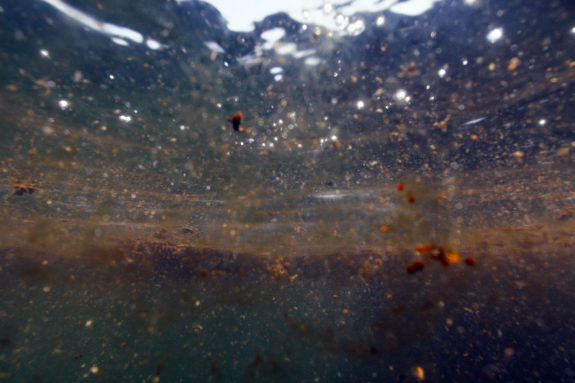 I wondered about opportunistic qualities (configurations of collaborative potentials) of poetry, wondered about, questioned, and needed them, nourishing myself with such wonderings, the glamorized puddle presenting as a portal to a metaphor-induced transformation of surface, an overlay that fit well —sandwich garnish— next to a down-home serving of unsettling occurrence arriving too soon for those of a certain kind of conscience to transform into the range of possibilities waiting to be enacted from under water in the gulf, in Louisiana looking up at an oil-painted ceiling riding the water, a tainted chapel, spoiled colors of glory. (image credit: Matthews/AP, as found at the New York Daily News site.)
I wondered about opportunistic qualities (configurations of collaborative potentials) of poetry, wondered about, questioned, and needed them, nourishing myself with such wonderings, the glamorized puddle presenting as a portal to a metaphor-induced transformation of surface, an overlay that fit well —sandwich garnish— next to a down-home serving of unsettling occurrence arriving too soon for those of a certain kind of conscience to transform into the range of possibilities waiting to be enacted from under water in the gulf, in Louisiana looking up at an oil-painted ceiling riding the water, a tainted chapel, spoiled colors of glory. (image credit: Matthews/AP, as found at the New York Daily News site.)Perhaps I would not find beauty so necessary to growth and repair were it permanent, were it possible to make something that can endure all possibility of event, specifically a beauty in how things connect on so many scales, the choreography of connection, the energy, intensity, so that sometimes it's brutal, but I wouldn't want beauty to have to be only weak. I expect things to unfold in all the ways possible for unfolding. I accept the range. The spread. I adore it. The Limited Fork keeps bifurcating and bifurcating, sending out tines and sub-tines to attempt to locate and connect with the elements of spread, the inhabitants of range.
The specialness and preciousness of that which, in a particular form, will be lost is an outcome of interactions with apparent inevitability of demise of a particular iteration attached to a particular moment in the timeline and timescale of an entity's existence. That form, this form, that other form can be appealing to me; that form, this form, and that other form seduce me into wanting to engage with those forms, my engagement itself a configurable outcome of an interaction. A collaborative event. And it may be mutual. I too am a collaboration of many forms functioning as a community, an environment of identity.
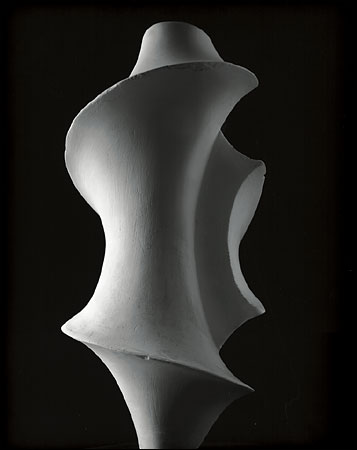
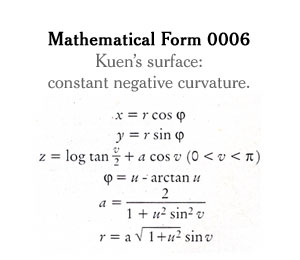 Mutual seduction of form by form. The sensual appeal need not be definable as a certain category of beauty; line and shape are suggestive, recur on various scales, offer locations of possible temporary connection, suggest parts that when combined can be experienced as whole subsystems of something even larger. Shape and angle offer potential, each a solution of an equation, points of entry into an interaction and points of departure from an interaction in which there's been a priming (courtesy the marking that occurs on some scale for varying duration, perhaps, in the romantic version that may or may not happen on some scale somewhere, including dream and imagination, infinitely dissipating) for participation in (collaboration with) transactions with other entities.
Mutual seduction of form by form. The sensual appeal need not be definable as a certain category of beauty; line and shape are suggestive, recur on various scales, offer locations of possible temporary connection, suggest parts that when combined can be experienced as whole subsystems of something even larger. Shape and angle offer potential, each a solution of an equation, points of entry into an interaction and points of departure from an interaction in which there's been a priming (courtesy the marking that occurs on some scale for varying duration, perhaps, in the romantic version that may or may not happen on some scale somewhere, including dream and imagination, infinitely dissipating) for participation in (collaboration with) transactions with other entities. (Hiroshi Sugimoto's mathematical form as seen in the New York Times portfolio slideshow.)
A general lack of completion (one way to configure the acceleration of the universe, the continuing dispersal of cosmic information) invites an understanding (wish) of the journey as a seeking of connection, perhaps even a seeking of a reunification that could be an evolved form of an initial condition of unification (just before whatever banged, banged and/or just before the moment of creation, for instance) that Limited Fork Theory prefers to posit as an initial condition of incredible intimacy (profound density, profound gravity holding what will be components [when it bangs/blossoms] into what could appear to be a single entity under intense pressure) that for some reason (invitation to the speculative) banged or blossomed in the violent manner (until engaged with on a timescale revealing even a crude form of gracefulness associated with that scale) of a puffball that in some understandings becomes graceful in the violent release of spores, a beautiful violence of trying to persist, violent joy of possibly successfully fighting extinction.
Though the source puffball explosion footage from High287 on youtube was not captured with a high-speed camera, I have nevertheless slowed down the footage, first to 5fps, then that video outcome, shown below, was slowed down to 10fps, resulting in a 2:35 version of a 31-second video capture that more properly should be called a 2:35 version of a 21-second video capture as the slowed down version begins 10 seconds into the 31-second source video.
FreeVideoCoding.com
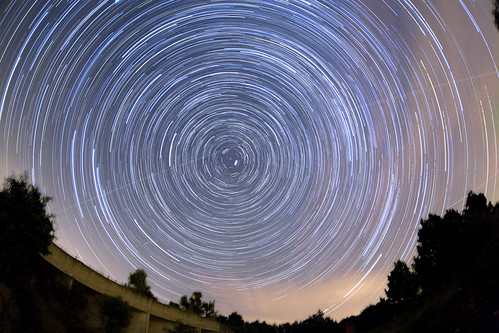 In this approach, acceleration does not have to be understood as speed, but may be configured as a lengthening, an elongation of distance between cosmic components, moving apart unto the limits of space in which to move apart, space created by the moving apart, space in which to move necessarily a part of the event of moving. Assuming a limit of generation of space to accommodate movement, then what? —a caving into generated space, components attempting reconnections? comets apparently particularly aggressive in their periodic attempts? icy cosmic suicides? One of them will do as my unorthodox version of an already unorthodox (not exactly in the new testament in this capacity) Gabriel, meteor showers subbing as visual iterations of his horn of judgment. (Perseida lesen Iimage by BZd, Pilis mountain, Hungary. Time lapse movie of 4.5 hours of meteor hunting., a collaborative configuration of an outcome of an interaction system that includes: BZd, time, Perseid meteors, a camera, opportunity, the Pilis mountain, and now, in some small reconfiguration: this post.)
In this approach, acceleration does not have to be understood as speed, but may be configured as a lengthening, an elongation of distance between cosmic components, moving apart unto the limits of space in which to move apart, space created by the moving apart, space in which to move necessarily a part of the event of moving. Assuming a limit of generation of space to accommodate movement, then what? —a caving into generated space, components attempting reconnections? comets apparently particularly aggressive in their periodic attempts? icy cosmic suicides? One of them will do as my unorthodox version of an already unorthodox (not exactly in the new testament in this capacity) Gabriel, meteor showers subbing as visual iterations of his horn of judgment. (Perseida lesen Iimage by BZd, Pilis mountain, Hungary. Time lapse movie of 4.5 hours of meteor hunting., a collaborative configuration of an outcome of an interaction system that includes: BZd, time, Perseid meteors, a camera, opportunity, the Pilis mountain, and now, in some small reconfiguration: this post.)Why necessarily bother to engage now with that which will not, that which cannot change? An inflexibility more pitiable than admirable in interaction. This would exclude faith which can waver though my mother, for one would probably deny this. Perhaps more thorough investigation, at scales not currently accessible, might reveal tiny bits of flexibility, maybe a form of evolutionary memory of having been more flexible. Forms of diminished urgency [energy] can be outcomes of interactions with the permanently unchanged and permanently unchanging (I do not know what that is, by the way), including unending stability as form of diminished urgency, even though stability may be quite appealing to the precarious, for instance, and to those entities and circumstances in which flux and uncertainty function more prominently as burdens, challenges, and hazards, or just as milder forms of annoyance.
The caption accompanying the set of Dmytro Szylak's Ukranian Disneyland images at Swipple says that: Mr. Szylak was born in 1920, in the village of Lwiw, Ukraine, and came to the U.S. in 1949. He began building this work around 1990, after retiring from the General Motors Hydromatic Factory, where he worked on the assembly line for 32 years; 32 years working on a communication system between engine and wheels, a system of collaboration to enable a vehicle to enable a journey, a configuration of a collaboration with space, time.

(map from wikimapia.)
Without knowing other information that, when interacting with what is being said here will necessarily reconfigure (somewhere in a range from the subtle to the profund) what's being said here, I will venture to say that 32 years of assembling transmissions primes a person to continue to put things together. A history of assembling probably without flexibility of component manipulation and/or of configuration creativity could interact with a longing to depart from parameters of GM assemblage (a departure that did occur via interaction with a devastating fire in 1953 in the Livonia, MI plant).
Four of my maternal uncles worked on automotive assembly lines in Ohio, and not once have they mentioned downtime in the factory where workers could take discarded parts to play with, making other structures of aesthetic and/or practical purpose, outcomes displayed privately in a plant show and/or also publicly. Perhaps Dmytro Szylak was aware of such possibilities without being able to act upon them other than in his mind as a factory of idea and imagination. Perhaps there were dreams of alternative building with materials he worked with for 32 years. Dreams perhaps involving repurposing of what was local, what he could get his hands on, producing intimate reconfigurations.
There's something rewarding about assembling, about building rather than demolishing, taking the outcomes of demolition to rebuild in other realizations of form; there's so much limited forkiness in his understanding of the cooperation of parts, their essential role in a larger enterprise of structure, maintaining that enterprise while retaining some integrity of part, transitioning at the boundaries, the locations of inter-part connection, from self to community, the hybrid form taking root in those connections between parts. Dmytro Szylak assembles a community structure from parts found in the community, discarded parts, parts available for repurposing, for transformation.
I like how the Ukranian Disneyland structure isn't solid; the eye can follow the lines and angles, can use openings to temporarily partition the sky, can corral constellations, can enjoy the patterns of connection, can fall in love with locations of union, can understand how Dmytro Szylak finds a place for newcomers. His structure system is not limited to growth in a single direction or on a single plane; there are many options for where and how a newcomer can join. In this way, there is no predetermined structural destination with which parts must conform (form of interaction/collaboration); structural growth patterns are shaped by contributions from the nature of the part joining the community structure. This open construction allows components (residents of the structure) to seem to play in their own playground. It is easy to begin rearranging the parts visually as the eyes play with the assemblage. Ukranian Disneyland is rescued from an inevitability of form, while being totally consumed with an inevitability of making and assembling.
The shuffling of information in any of its solid, fluid, virtual, digital, etc. forms is expected to occur in the practice of Limited Fork Theory. Many, many investigations of interactions, without theory-mandated boundaries; braking established instead by an investigator's interaction with integrity, scruples, ethics, and so forth, as defined by that investigator. Because interaction is a form of collaboration, participants in the interaction are at risk of influence, at risk of being marked by the interaction, changed in some way, from mild, barely perceptible, apparently no change to gross change, nearly complete transformation or domination. Interaction works best when participants enter the transaction with some opening at at least some of the contact points. Interaction works best when participants enter it with a willingness to be changed. It is to appreciate the threats and possibilities of many forms of journey. After exposure (form of interaction) to configurations of information, it may not be possible to maintain beliefs exactly as they were before exposure.
This approach and its consequences (the system of this approach) is difficult for my mother, difficulties to be explored in a variety of visual configurations, two in progress now, one of which, in an early emerging time-based form, you may watch:
FreeVideoCoding.com
Digital handling and manipulation of information is becoming increasingly easy to accomplish by those without sophisticated and specialized training via applications with user interfaces becoming smarter all the time, leaving the user having to make mostly creative decisions, bypassing complexity of use that would limit access to comfort with using the applications to produce some object of some form of information. As easy as word processing! —And becoming easier! Entry-level applications provide features that promise pro-sumer outcomes, outcomes of sufficient polish that aesthetic merit can be successfully defended. Indeed, Tarnation, made on a Mac with iMovie, the basic movie-editing application native on all Apple computers (with versions available now for both some generations of iPhone and iPad), won Best Documentary from the National Society of Film Critics, the Independent Spirits, the Gotham Awards, and the LA and London International Film Festivals. Here's the Tarnation trailer:
Part of a reason to use more digital approaches in producing academic objects of information involves answering questions about the purpose of an academic object of information. As most academic objects of information are text-based, some of the questions involve forms that text can take (however brief the taking), locations that can host text, and how text can be shared with a wide range of humanity, including some constituents with varying sensory function. Each form has its own rules governed by the existing boundaries of possibility within that form, boundaries that can change as what's possible changes in some other moment, or some other aspect of a moment. The information in an academic object of information can expect to adapt (as the form can also expect) in a collaboration with form, the collaboration (or interaction) temporarily (for the duration of the interaction) adjusting what is possible for the hybrid form, drawing on the parameters of possibility that each participant brings to the interaction.
—This is a primary location of excitement for me in the study of interacting systems, watching, causing, participating in hybrid forms that emerge in collaboration or interaction, some forms of which are forms of collision, forms of obliteration, but also forms of beauty that seem to exert no harm on scales to which I have access at the time of consideration.

Good job I enjoyed reading your post thanks for sharing.
ReplyDeleteSmall Business Logo Design